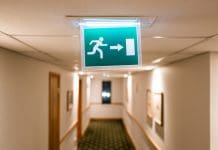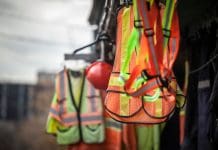Liam Blears, head of facades at passive fire specialist FSi Promat, discusses the need to build the reassurance of residents into recladding projects that are vital to address the risk of fire
With the launch of the Cladding Safety Scheme (CSS) in July last year, thousands of mid-rise buildings are now eligible to have cladding that is potentially a fire risk replaced. However, living in accommodation that has elements that have been identified as a potential fire risk is a huge concern for residents.
Reassuring residents in these circumstances is not an easy task. After Grenfell, some of those in high-rise buildings found themselves living in a building that was labelled as being unsafe and a fire risk. Not to mention the financial implications this caused, with many instantly losing a significant value in their properties and being required to foot the bill for upgrading the cladding.
The government introduced the CSS recladding programme to address this. But for private homeowners and larger projects, the process of obtaining funding approval has been complicated. As a result, many residents have spent years waiting for recladding work.
The scheme’s introduction opens a pot of £5.1bn of government funding to support the recladding of residential buildings of 11m and over (11m-18m in London) to ensure no combustible materials are used on buildings above 18m and that extra requirements are met on those between 11m and 18m, which is great news.
Reassuring residents’ concerns over recladding is crucial to rebuilding relationships
However, as an industry, it’s vital that we emphasise the steps that have been taken over the last six years to ensure the cladding products used meet and, in the case of FSi Promat, meet and exceed the necessary fire rating standards on fire protection and performance.
With the introduction of the Building Safety Act, competence has been moved firmly into the spotlight and demonstrating this – and raising awareness of it – is essential to reaffirming trust in subcontractors, developers and, ultimately, residents. For passive fire protection, this is something that should already be in evidence.
At FSi Promat, competency CVs are used to demonstrate technical expertise through up-to-date qualifications and experience. All cavity barrier projects are supported by a specialist team that have, or are working towards, the Institute of Fire Engineers (IFE) Passive Fire Protection Level 3 – the highest level available.
Technical support
Cavity barriers are integral to the safety of cladding systems, providing a seal to stop the fire spreading for a specified amount of time. While recladding projects on the surface are like new build projects, there is potential with retrofitting new cladding for complications to arise, which makes specialist support essential.
The FSi Promat technical team works closely with project consultants and subcontractors to make sure the correct cavity barrier is specified and that any installation issues are dealt with promptly – visiting sites to ensure that the required installation parameters are met.
Open State Cavity Barriers are designed to expand to fill a ventilation gap behind a façade in the event of a fire breaking out – and it is essential that the product specified can expand to the width of the gap.
Within existing buildings there can be many challenges, such as having to accommodate for uneven gaps or changes in the substrate. Being able to account for these conditions is vital for a cavity barrier to perform correctly. This is why expert input is essential to ensure the maximum width has been accommodated and the application suitably tested to ensure it meets or exceeds the level of fire resistance.
For example, FSi Promat has cavity barriers that can close ventilation gaps of up to 25mm and 50mm to ensure the correct system ventilation is maintained, but still offer flexibility in design to maintain compartmentation in the event of a fire.
Reassurance through testing
Passive fire protection products need to be tested to the highest standards – and backed by quality assurance at every level.
All FSi Promat cavity barriers carry third party certification to demonstrate clearly that they meet the highest standards. This isn’t a legal requirement, but it is the best way to show that a life-critical product will perform as expected if it is ever needed – and offers reassurance to all parties involved in recladding projects that the product has been tested in the application it is to be used in.
“After Grenfell, some of those in high-rise buildings found themselves living in a building that was labelled as being unsafe and a fire risk. Not to mention the financial implications this caused, with many instantly losing a significant value in their properties and being required to foot the bill for upgrading the cladding.”
Recladding is often carried out on a building that is already in use, so the quality of the products needs to be supported by reassurances over disruption to the people living there. This means choosing products that are easy and quick to install.
FSi Promat’s Silverliner Open State Cavity Barrier, for example, is a rapid fit system that is designed to be easy and quick to install, meaning there is no hot works, and that the passive fire protection can be installed with minimal disruption to residents.
Residents also want reassurance that the problem will be corrected first time – from both a safety and disruption point of view. The Building Safety Act has underlined the need for accountability and competence that must now be displayed at every stage of a building’s construction.
This is something that should have already been in place, though. FSi Promat has always offered training and technical support in the installation of its products as a duty of care, along with site checks to make sure cavity barriers are installed correctly. This should be done as standard.
There has been a huge pressure on developers to put projects right through recladding, but there has also been a responsibility among homeowners who have often had to shoulder the financial burden of recladding their homes.
To reassure residents over their safety, it is essential that awareness is raised of the role that third-party certification plays in demonstrating the effectiveness of passive fire protection – and of a commitment to standards in both the manufacture and installation.
Through showing a commitment to quality assurance and making residents aware of the role cavity barriers play in keeping buildings safe by delaying the spread of fire, the passive fire protection industry can help to reassure residents that have endured living in a home identified as a fire threat – and help to raise and support safety standards in future.
*Please note that this is a commercial profile.













